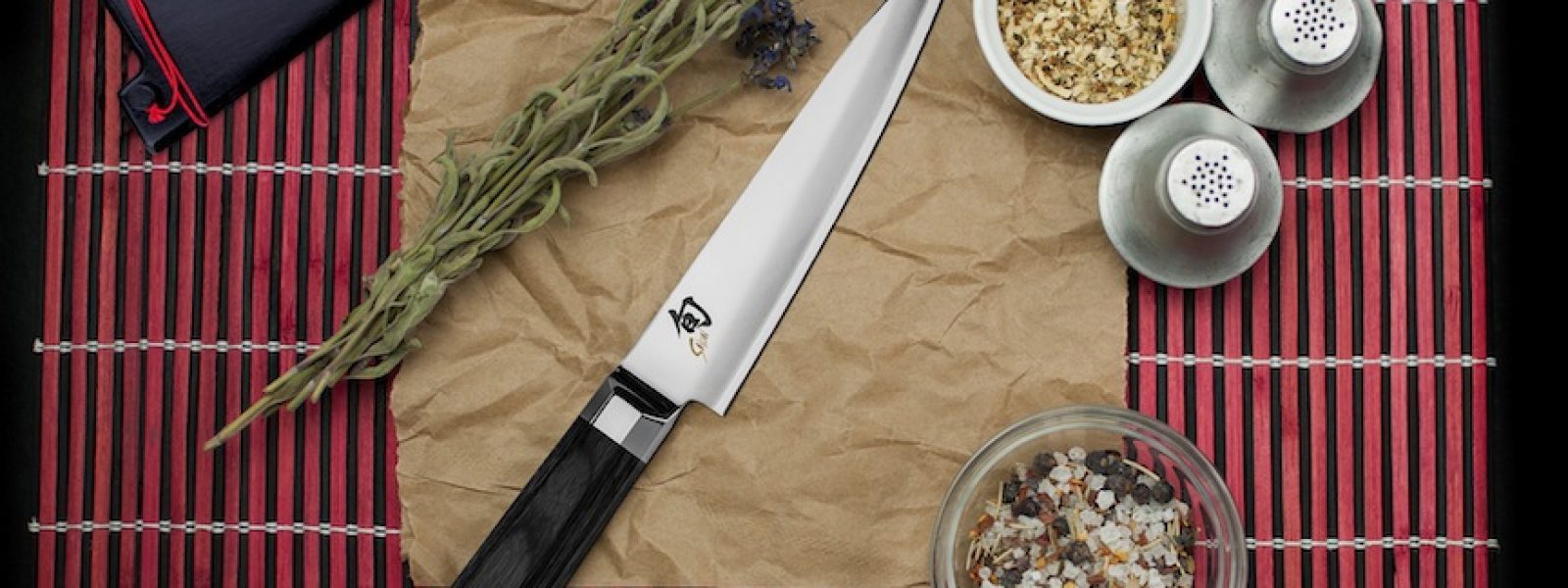Knife Care 101
Every chef says the same thing, “If I had to pick one tool I couldn’t live without, it’d have to be my knife.” Guess what, it’s a cliché… but it’s true. When it comes to gadgetry, I am all about the latest and greatest new phone, tablet, watch and camera. But in my kitchen? Forget about it. Aside from my immersion circulator, you won’t find anything but the basics at our house. Enameled cast-iron pots, wood cutting boards, tasting spoons… I’ve used the same type of equipment for decades.
From hardware stores to high-end kitchen galleries, you can find knives ranging from twenty bucks to hundreds of dollars. All new knives feel pretty sharp, so is spending the extra cash worth it? Yes, 1,000 percent. Forged, high-carbon steel or high-carbon stainless steel hold their edge well (less sharpening needed, but you should still hone the blade regularly). One high-quality knife should last you decades; you will blow through a dozen crummy ones in that amount of time.
Like any quality, handcrafted item however, your knife’s longevity depends on how you care for it. Follow these rules and your knives will outlast you.
Use the appropriate cutting surface.
Not only does the sound of chopping on ceramic, glass, acrylic and tile give me the willies, it can chip your blade, too. And I don’t care if your countertop sales guy told you that you don’t even need a cutting board if you opt for granite. Instead, opt for wood and polypropylene surfaces, which are softer materials and “give” under the blade. If the knife can leave a cut line in the board, your cutting board is sufficiently soft.
Keep it dry.
Moisture weakens the stainless steel and promotes micro-corrosion, which results in small chips along the blade. Not cool! Wash your knife immediately after use with a mild dish soap, then dry it thoroughly. And for cripes’ sake, never ever put your knife in the dishwasher. Not only will it dull your blade, but it can put dings in the dishwasher. Everyone loses.
Store your knife in a safe place.
Just because Great Aunt Mildred stored her knives in a drawer all loosey-goosey doesn’t mean you should. Invest in a knife block, in-drawer storage system or a magnetic knife holder. You could also invest in a sheath, which is great for a guy like me who often travels with knives in tow.
Chop with finesse, not force.
Don’t push straight down on your blades, slap them aggressively on your cutting board, or use the blade to pull diced carrots from the cutting board to your prep bowl. This wreaks havoc on your body (hello, sore hands and shoulder) and your blade. Instead, move the blade in either a forward or backward direction. By sliding the blade forward when you chop, rather than pushing straight down, the blade does the work. The same applies to pulling back on the knife. This slicing motion will cut down on unnecessary muscle strain and keep your blade in excellent condition.


